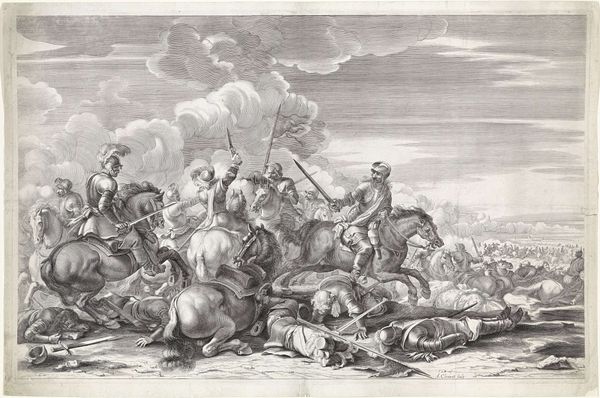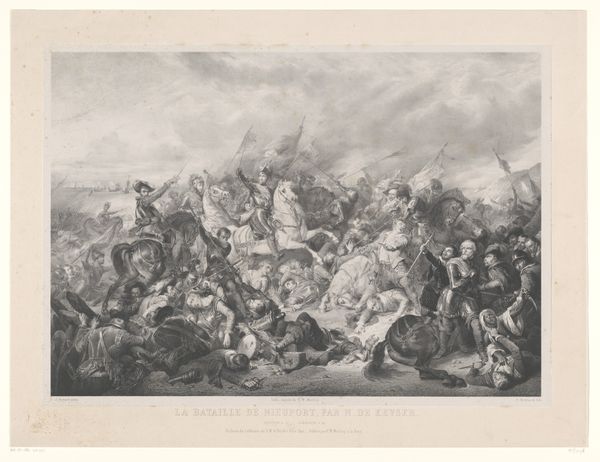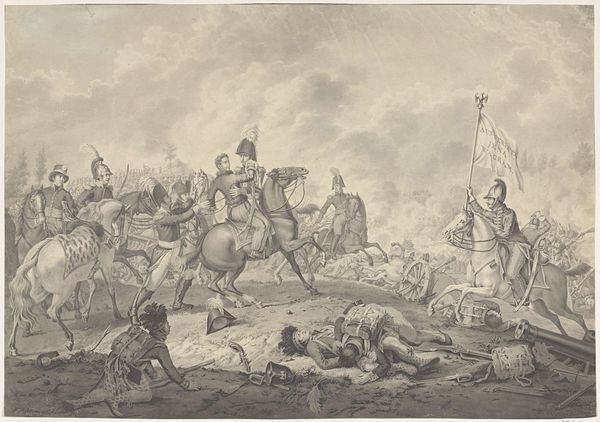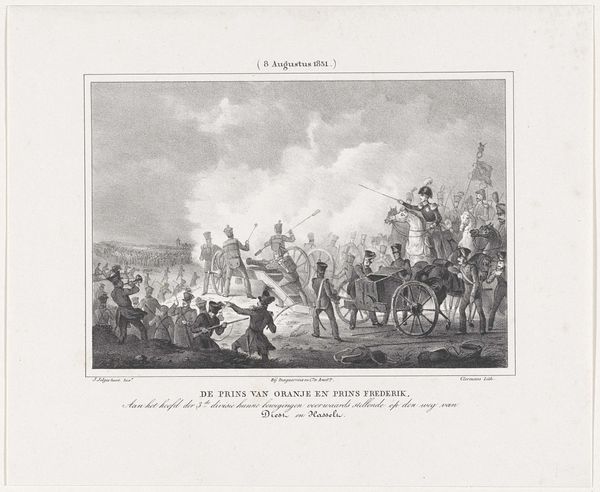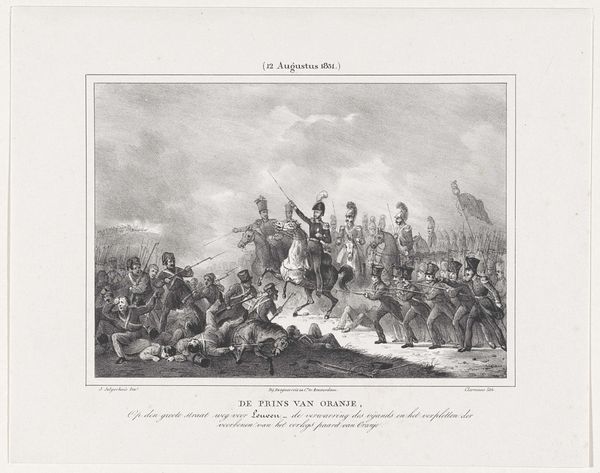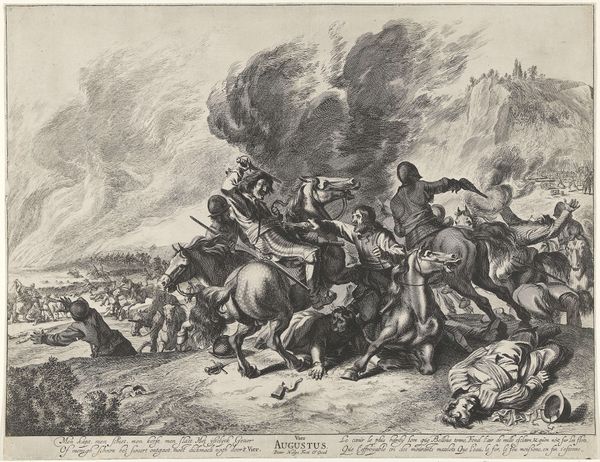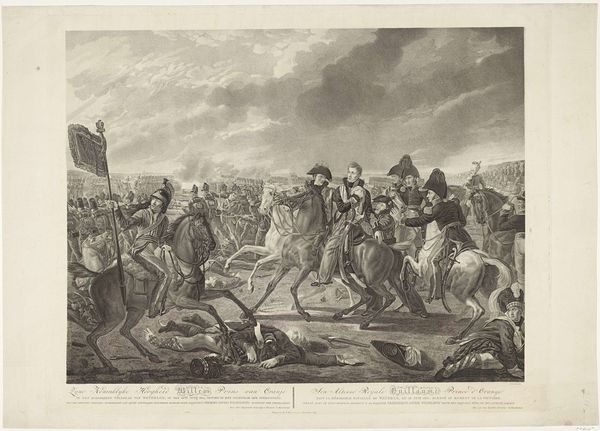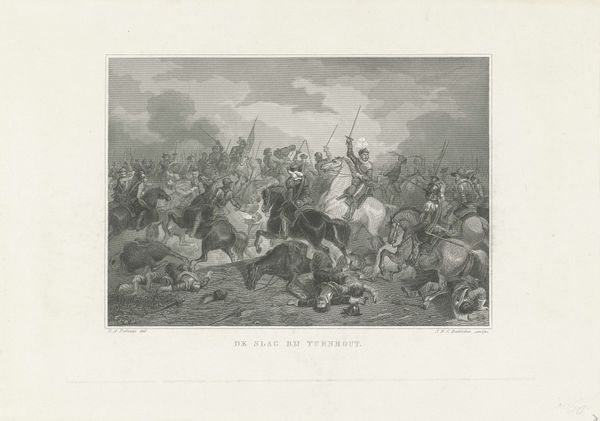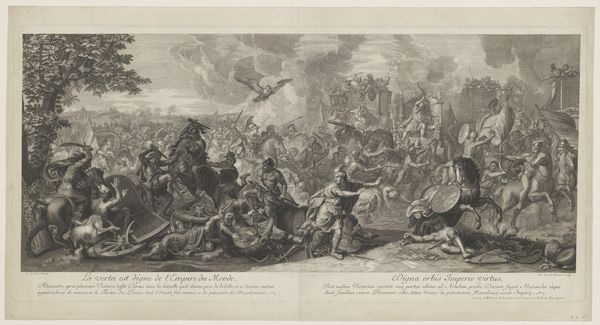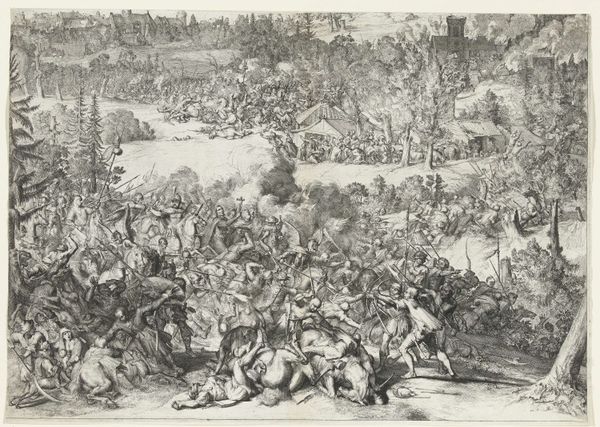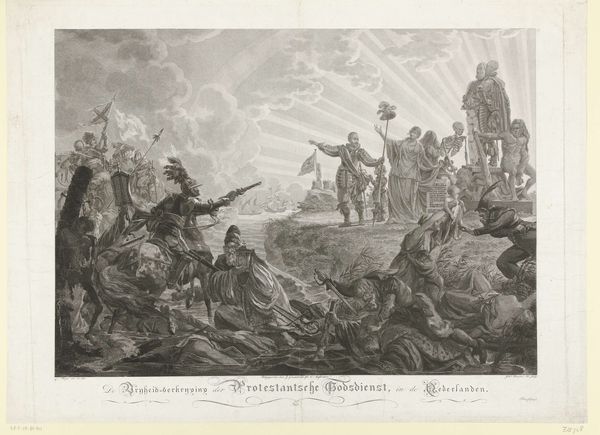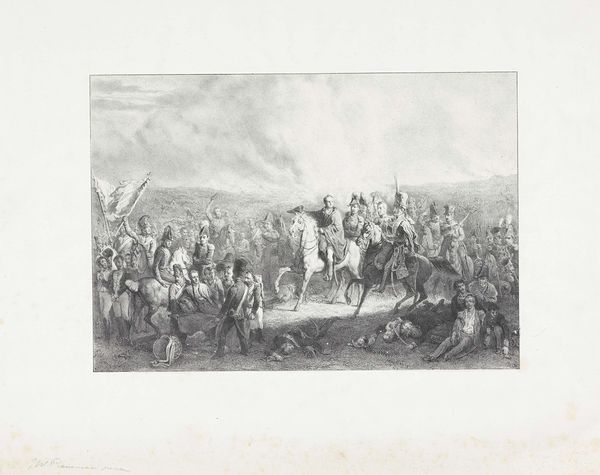
#
narrative-art
# print
#
landscape
#
history-painting
#
realism
Dimensions: height 182 mm, width 261 mm, height 359 mm, width 490 mm
Copyright: Rijks Museum: Open Domain
Editor: This print, titled "Slag bij Nieuwpoort, 1600," by Adolf Carel Nunnink, likely created sometime between 1825 and 1894, captures a chaotic battle scene. The monochromatic palette makes it feel stark and quite intense. What can you tell me about the significance of a print like this, depicting a battle from so long ago? Curator: The piece speaks volumes about 19th-century historical memory and nation-building. Battle scenes, especially those depicting foundational or victorious moments, served a crucial public function. This print of the Battle of Nieuwpoort wasn't just documenting history; it was actively constructing a national narrative, framing Dutch identity, perhaps, in relation to its struggles and triumphs. What effect do you think making it a print has? Editor: Good question. It means it could be widely distributed and more affordable, bringing this historical narrative to a broader audience, shaping public opinion… propaganda almost? Curator: Precisely. The Rijksmuseum's choice to house this print underscores its ongoing relevance in shaping national identity. Consider too, how this battle relates to broader European conflicts of the era. Do you think it represents the military, social, and technological circumstances surrounding war during its time? Editor: It seems pretty romanticized for a work with Realism as a listed style. It focuses on the supposed glory, rather than the brutal, human cost. Curator: Yes. The selective emphasis shapes the reception, influencing how viewers engage with and interpret the event, in terms of glory or defeat. How the battle is framed, and by whom, is what gives the image its enduring political weight, wouldn’t you agree? Editor: Absolutely. I’ve never thought about prints of battles being more about the time they were made in than the event they depicted, which helps contextualize not only how art is received but why it’s even produced.
Comments
No comments
Be the first to comment and join the conversation on the ultimate creative platform.
